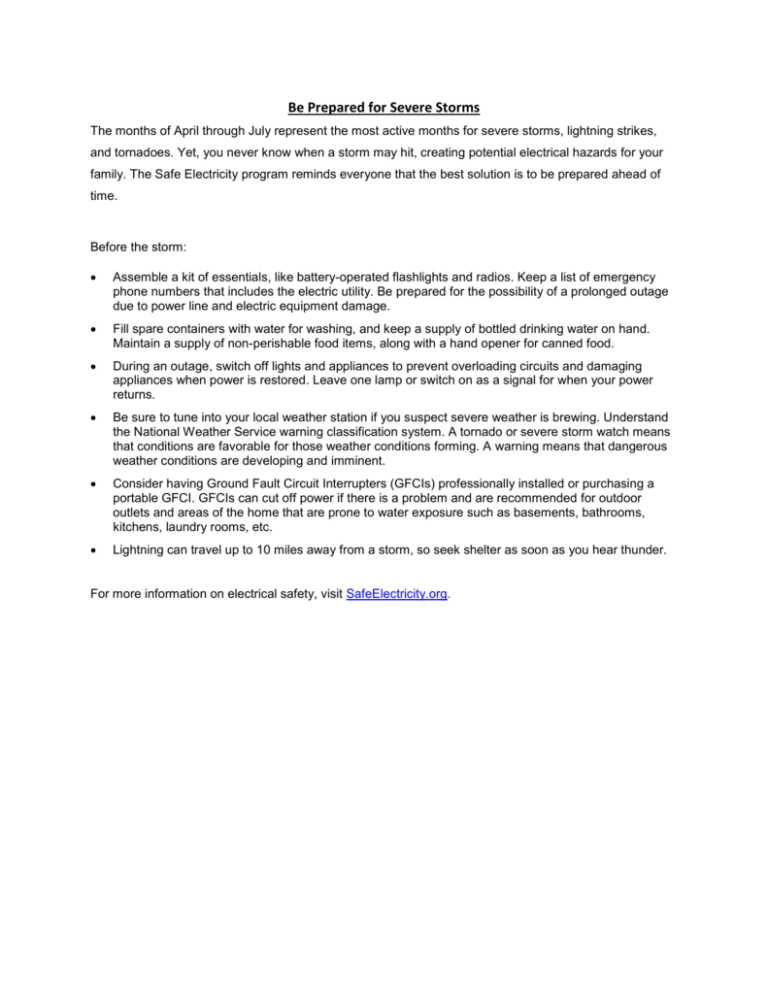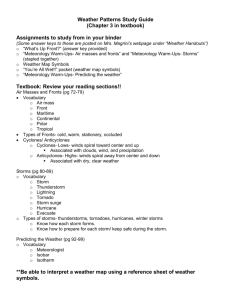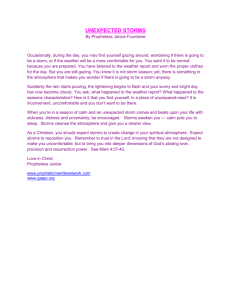Storm Prep - Safe Electricity
advertisement

Be Prepared for Severe Storms The months of April through July represent the most active months for severe storms, lightning strikes, and tornadoes. Yet, you never know when a storm may hit, creating potential electrical hazards for your family. The Safe Electricity program reminds everyone that the best solution is to be prepared ahead of time. Before the storm: Assemble a kit of essentials, like battery-operated flashlights and radios. Keep a list of emergency phone numbers that includes the electric utility. Be prepared for the possibility of a prolonged outage due to power line and electric equipment damage. Fill spare containers with water for washing, and keep a supply of bottled drinking water on hand. Maintain a supply of non-perishable food items, along with a hand opener for canned food. During an outage, switch off lights and appliances to prevent overloading circuits and damaging appliances when power is restored. Leave one lamp or switch on as a signal for when your power returns. Be sure to tune into your local weather station if you suspect severe weather is brewing. Understand the National Weather Service warning classification system. A tornado or severe storm watch means that conditions are favorable for those weather conditions forming. A warning means that dangerous weather conditions are developing and imminent. Consider having Ground Fault Circuit Interrupters (GFCIs) professionally installed or purchasing a portable GFCI. GFCIs can cut off power if there is a problem and are recommended for outdoor outlets and areas of the home that are prone to water exposure such as basements, bathrooms, kitchens, laundry rooms, etc. Lightning can travel up to 10 miles away from a storm, so seek shelter as soon as you hear thunder. For more information on electrical safety, visit SafeElectricity.org.









![My Severe Storm Project [WORD 512KB]](http://s3.studylib.net/store/data/006636512_1-73d2d50616f6e18fb871beaf834ce120-300x300.png)

